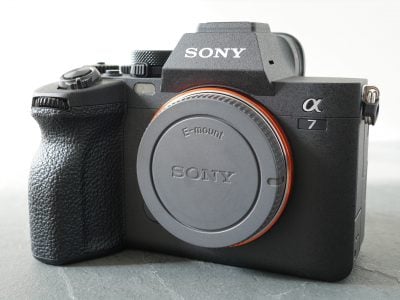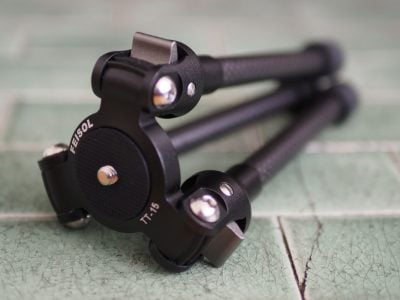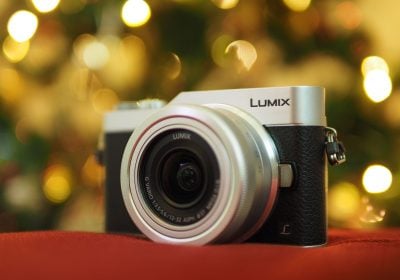Panasonic Lumix GX80 GX85 review
-
-
Written by Gordon Laing
Quality
To evaluate the real-life resolution of the Lumix GX80 / GX85, I shot the following scene with it using the Olympus 17mm f1.8 lens, set to f4 for the optimal quality. I then reshot the same composition moments later with the Lumix GX8 using the same lens to see how they compare. Remember the Lumix GX8 may have the highest resolution in the Lumix G range with 20 Megapixels, but the Lumix GX80 / GX85 is the first in the series without an optical low pass filter. Which will resolve the most detail? Let’s find out by comparing 100% crops taken from the areas marked by red rectangles below. Note I shot this scene in RAW+JPEG mode, but until the RAW files are supported by Adobe Camera RAW, I’m just presenting a JPEG comparison here using the default settings.
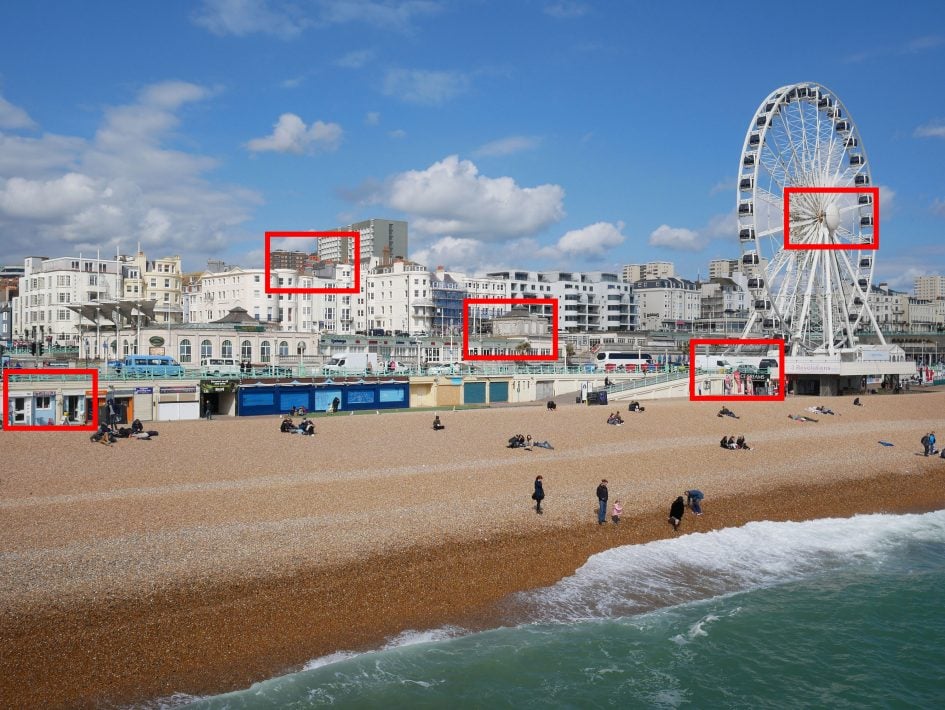
First things first: the illumination on the scene changed a little on the building in the third row of crops between shots, so please look beyond that and compare the detail rather than the lighting.
With its higher resolution, the GX8 crops show a slightly tighter area of the composition, but at first glance there’s little evidence of any additional detail. If you look really closely at the writing on signs, I’d say there’s fractionally more resolved on the GX8 crops, but it’s really very subtle.
Interestingly I’d say a more noticeable difference is the crispness of the crops, with those from the GX80 / GX85 looking a little sharper. Now this could be down to a number of factors, including possibly greater sharpening applied by the image processing by default, but it is important to also remember the GX8 has a low-pass filter which blurs fine detail, where as the GX80 / GX85 does not. Until I get to process and compare the RAW files, I can’t say for sure which is responsible for this small boost in crispness on the GX80 / GX85 crops, but if it does end up being due to the absence of the low-pass filter, I’d say it’s a good result for the new body. Yes, the GX8 can resolve slightly finer details under the right conditions, but in general-use, I actually prefer the crisper appearance of the GX80 / GX85 images.

Above left: Lumix GX80 / GX85, right: Lumix GX8. Both with 17mm f1.8 at f4, 100% crops from JPEGs

Above left: Lumix GX80 / GX85, right: Lumix GX8. Both with 17mm f1.8 at f4, 100% crops from JPEGs

Above left: Lumix GX80 / GX85, right: Lumix GX8. Both with 17mm f1.8 at f4, 100% crops from JPEGs

Above left: Lumix GX80 / GX85, right: Lumix GX8. Both with 17mm f1.8 at f4, 100% crops from JPEGs

Above left: Lumix GX80 / GX85, right: Lumix GX8. Both with 17mm f1.8 at f4, 100% crops from JPEGs
Scroll down to see how they compare through their sensitivity ranges in my Lumix GX80 / GX85 noise results. Or skip to my Lumix GX80 / GX85 sample images or my verdict!
Panasonic Lumix GX80 / GX85 noise
To compare noise levels in low light I photographed this scene with the Lumix GX80 / GX85 and the Lumix GX8, fitted with the Olympus 17mm f1.8 closed to f5.6. I also decided to include the Sony A6000 as many may also be considering this flat-topped alternative with its larger and higher resolution 24 Megapixel APSC sensor. I chose it over the A6300 as it’s priced closer to the new Lumix and simply because I happen to own one. Unfortunately the only lens I had available for testing at the time was the standard 16-50mm kit zoom which is far from the best lens in the catalogue, but with the aperture closed to f5.6 and the crop taken from near to the middle of the frame, it should still perform reasonably. I include it here out of curiousity more than anything else – this page is primarily about the GX80 / GX85 versus the GX8.
Each camera was using its default processing style and the shutter speeds were matched for each sensitivity – so what you’re looking at below is directly comparable. The full view is shown below with the red square indicating the cropped area, presented below at 100%. I’ve compared out-of-camera JPEGs here but also recorded the scene in RAW for a future comparison when all the cameras are properly supported in Adobe Camera RAW.
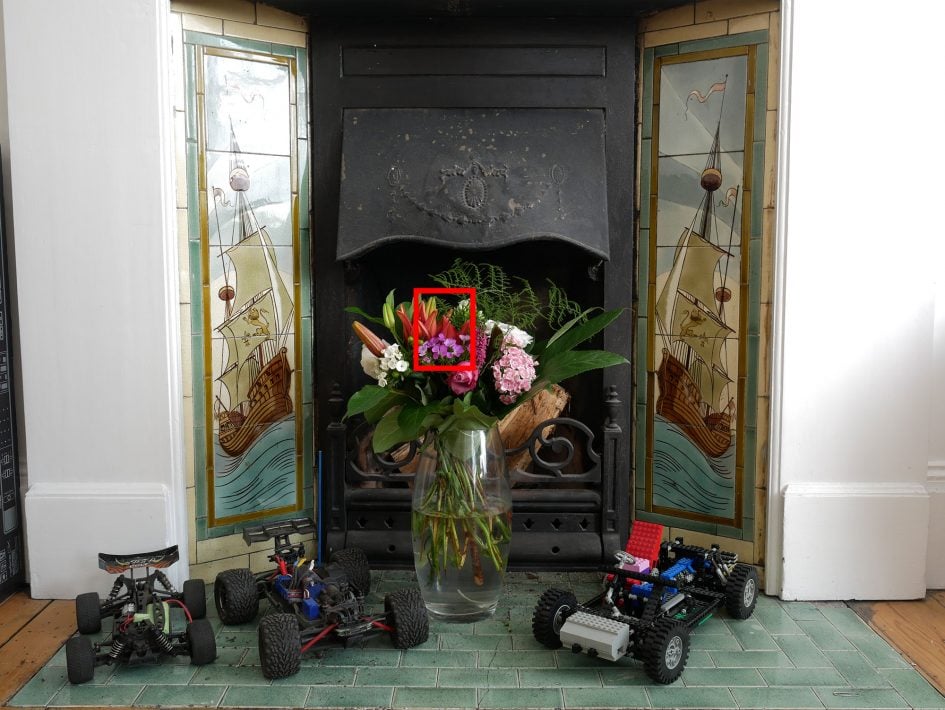
From left to right in the table below you’ll see crops from the GX80 / GX85, GX8 and Sony A6000. Each camera has progressively higher resolutions: 16, 20 and 24 Megapixels, so the cropped area becomes smaller. Remember the GX80 / GX85 and GX8 share the same sensor area, but the former has no low-pass filter. Meanwhile the Sony A6000 may have the highest resolution of the three, but also sports a larger APSC sensor area. I’ve matched the vertical field-of-view here.
Looking at the crops from the two Lumix bodies first, there’s a repeat of what we saw on the previous page: the output from the GX80 / GX85 looks a little crisper than the GX8 when both are set to record JPEGs with their default settings. Maybe it’s the absence of a low-pass filter on the former, or simply punchier processing, but the result here looks good to me. As before I’m also finding it hard to notice much additional resolving power from the GX8.
I’d say both models continue to deliver decent levels of detail up to 800 ISO, but the steady march of increased noise and noise reduction means there’s some softening of the image and loss of fine detail from 1600 ISO upwards. You can see it in the leaves and in the petals, along with the gradually fuzzier ferns. That said, the output is still usable at 3200 and 6400 ISO at smaller sizes, but there’s bigger losses at 12800 ISO. All the cameras here offer 25600 ISO, but the result is very compromised.
Meanwhile the Sony A6000’s default processing is softer which, coupled with an inferior lens, means you’re not seeing much benefit of its higher resolution and larger sensor. But there are glimpses here and there, especially in the ferns, where there appears to be fractionally greater detail resolved, albeit nothing to base a decision on. Interestingly it too sees a turning point around 1600 ISO with a noticeable fall in quality and increase in artefacts at 3200 ISO upwards. Certainly despite its bigger sensor and higher resolution, I don’t see any significant advantage to the A6000 here.
As for the two Lumix bodies, the new GX80 / GX85 keeps-up admirably with the higher-end GX8, delivering crisper output by default and essentially matching the real-life resolution and noise, when both are reproduced the same size. It’s a good result from the new body which delivers quality as good as any Lumix G to date. That’s all I can say in this comparison until I get a chance to compare their RAW files with the same processing.
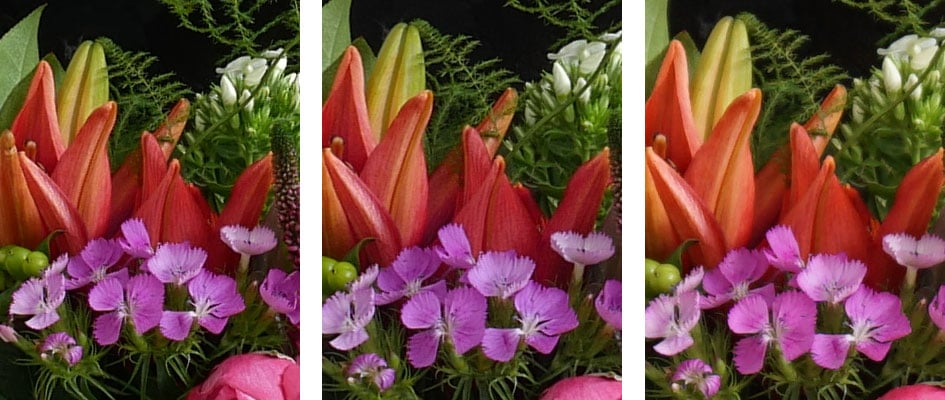
Above left: Lumix GX80 / GX85, middle: Lumix GX8, right: Sony A6000. All 100% crops from JPEGs at 100 ISO
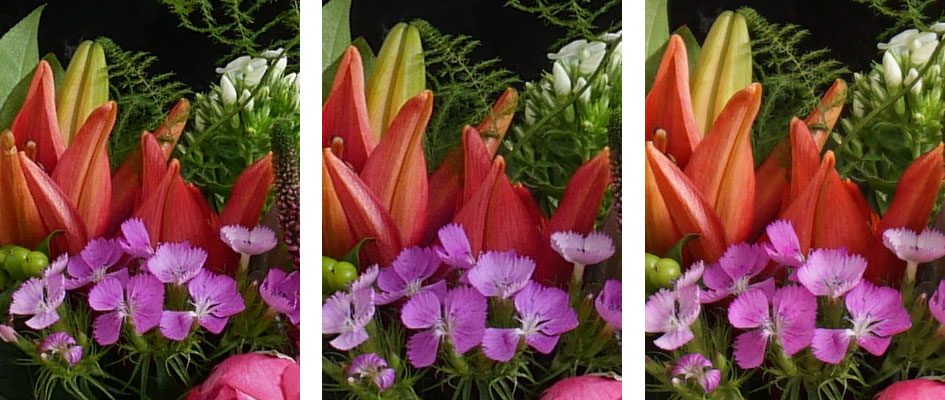
Above left: Lumix GX80 / GX85, middle: Lumix GX8, right: Sony A6000. All 100% crops from JPEGs at 200 ISO
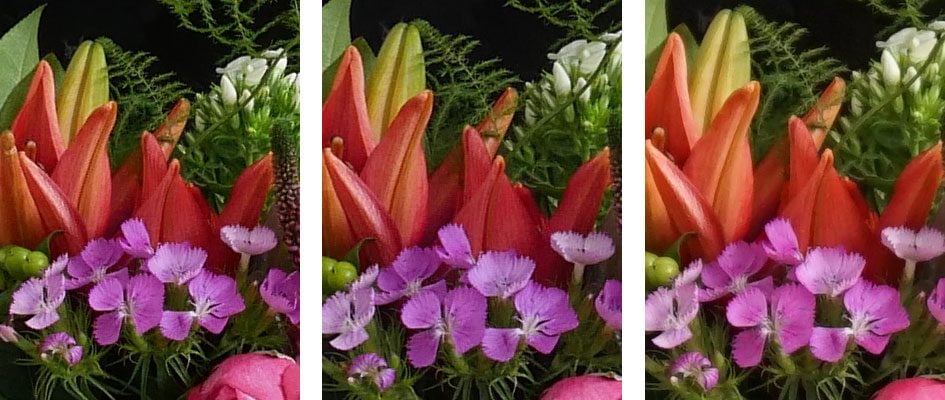
Above left: Lumix GX80 / GX85, middle: Lumix GX8, right: Sony A6000. All 100% crops from JPEGs at 400 ISO
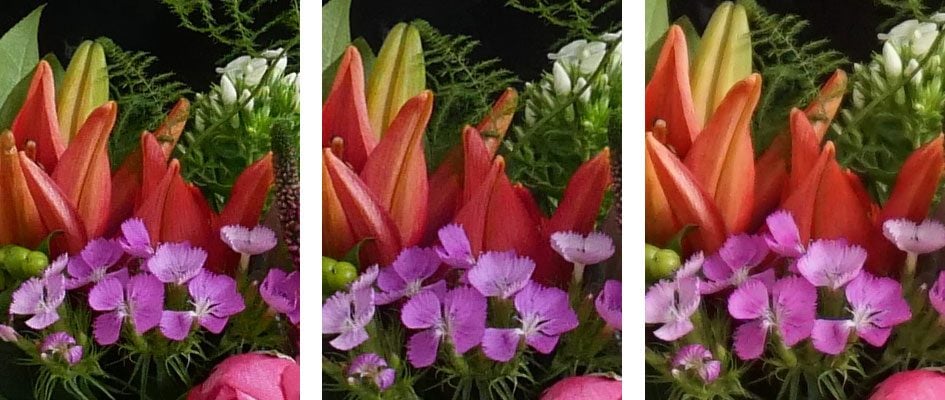
Above left: Lumix GX80 / GX85, middle: Lumix GX8, right: Sony A6000. All 100% crops from JPEGs at 800 ISO
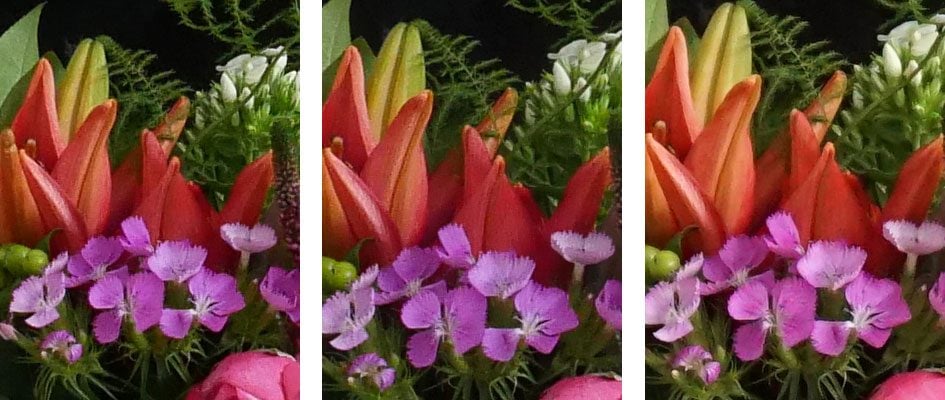
Above left: Lumix GX80 / GX85, middle: Lumix GX8, right: Sony A6000. All 100% crops from JPEGs at 1600 ISO
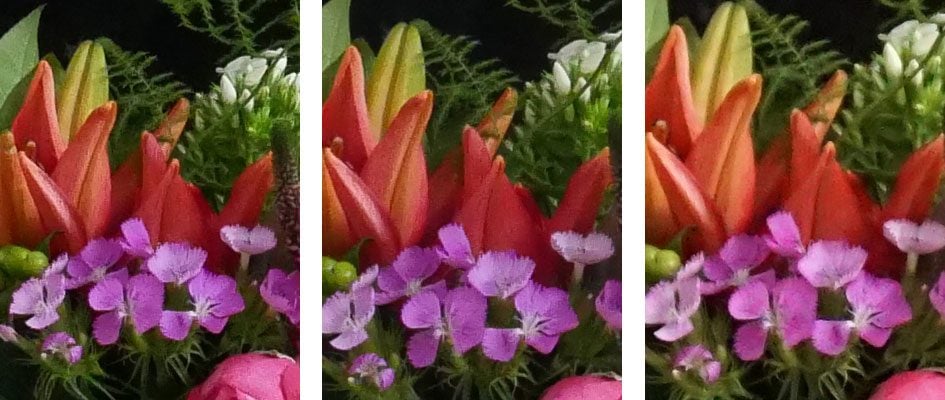
Above left: Lumix GX80 / GX85, middle: Lumix GX8, right: Sony A6000. All 100% crops from JPEGs at 3200 ISO\
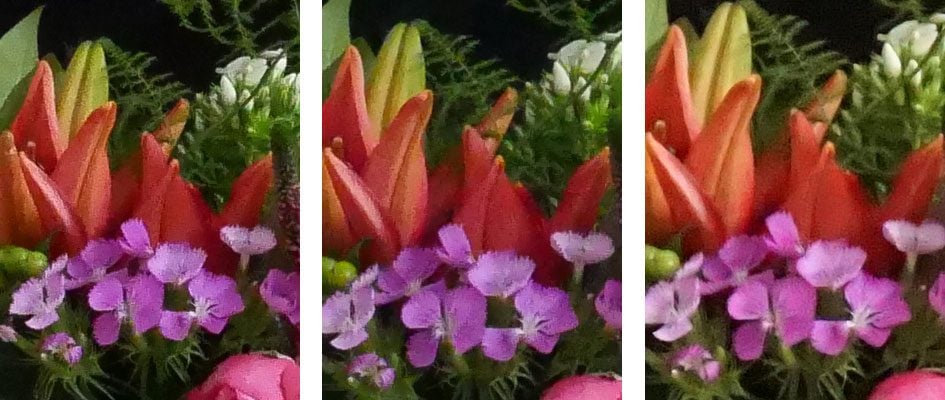
Above left: Lumix GX80 / GX85, middle: Lumix GX8, right: Sony A6000. All 100% crops from JPEGs at 6400 ISO
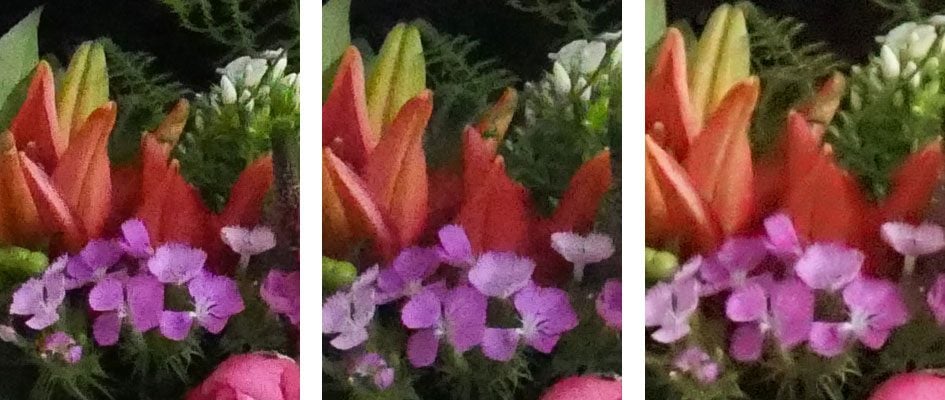
Above left: Lumix GX80 / GX85, middle: Lumix GX8, right: Sony A6000. All 100% crops from JPEGs at 12800 ISO
Want to see more? Check out my Lumix GX80 / GX85 sample images or tab back to my verdict!
